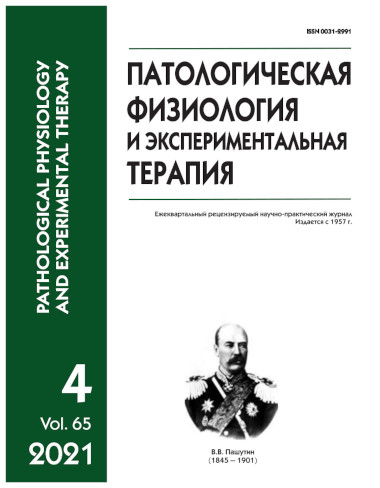Behavioral response and erythrocyte chromophilia of rats in experimental traumatic brain injury
Abstract
The pathogenetic basis of changes in blood microcirculation in the brain due to traumatic brain injury (TBI) has not been fully studied due to the highly invasive nature of neuromorphological methods. Aim: To study the behavioral status and informative value of cytochemical criteria for erythrocyte chromophilia as markers of cerebral microvessel vasoreactivity in rats with TBI. Methods. The study was conducted on 3-month-old Wistar albino, outbred rats weighing 250-270 g. Mild to moderate TBI was simulated using a modified falling weight model for adult rats. At 2 hrs, 1, 2, 8, and 14 days after TBI, a neurological examination was performed according to the modified Neurological Severity Score (mNSS) modified scale and a sensorimotor examination was performed according to the degree of anxiety in the light-dark test. Behavior was analyzed using the conditioned passive avoidance response test. The functional state of erythrocytes was studied using the chromaffin reaction. Brain tissue samples stained by Nissl and with hematoxylin–eosin were evaluated under a microscope, digital images were obtained, and morphometric processing was performed. Results. Neurological examination after moderate TBI showed focal symptoms corresponding to severe neurological disorders, while after mild TBI, rats had minor coordination disorders. In the conditioned passive avoidance response test on the 7th day, the rats showed a state of increased anxiety. Morphometric analysis of the brains showed a decrease in the diameter of capillary lumen and changes in neurons, indicating signs of hypoxia. The cytochemical assessment of erythrocytes, involving a quantitative determination of the degree of fluorescence, revealed features of cell oxidative metabolism in injured rats. Moreover, these indicators correlated with morphological signs of hypoxia in brain neural tissue. Conclusion. In the initial post-traumatic period, there was a decrease in the capillary lumen diameter of the brain neural tissue and the presence of morphological signs of neuronal compensation, which is a local response of cells to cerebral ischemia. Disorders of hemorheology were found. These changes were a consequence of altered redox processes due to hypoxia after intracranial injury.






